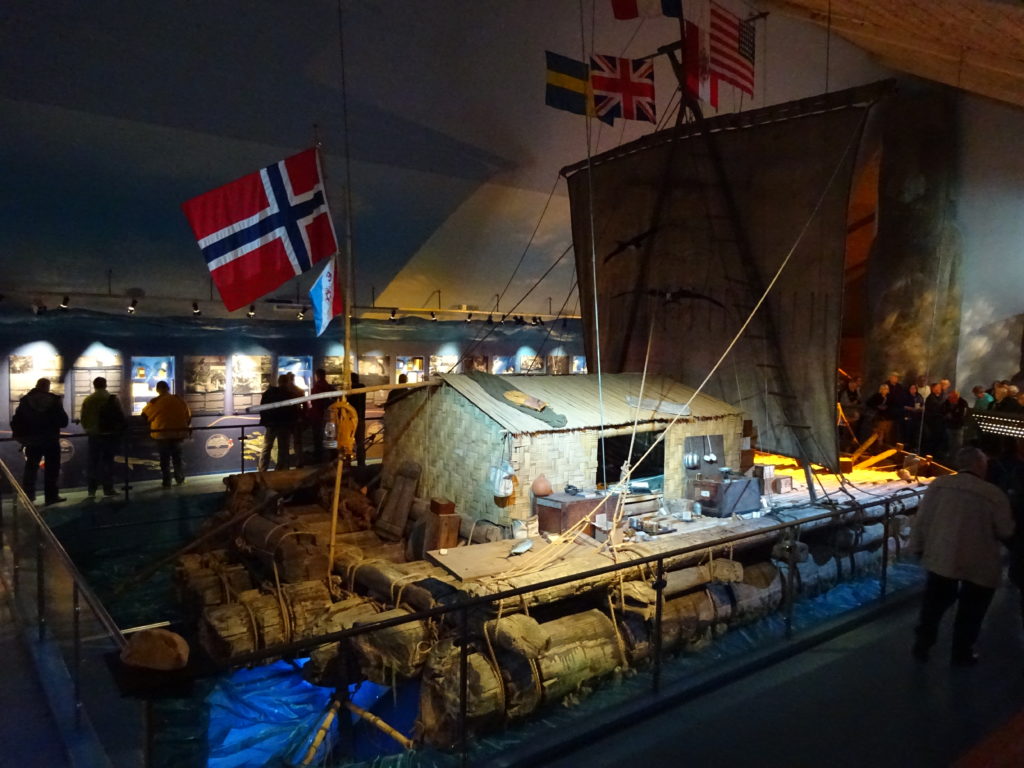Today (August 7, 2017) marks the 70th anniversary of Thor Heyerdahl’s amazing 4300-mile, 101-day sailing of a balsa wood raft named Kon-Tiki from Peru to an island near Tahiti. And I got to see Kon-Tiki in Oslo recently.
Heyerdahl was a Norwegian anthropologist. He and his wife spent a year living on the island of Fatu Hiva in the South Pacific. They noticed that the ocean waves always struck the eastern shore of the island, which got them wondering if the original inhabitants had settled from the east, not the western lands that were closer. After 11 years of getting no support for his theory, Thor decided the best way was to prove it was possible that prehistoric South Americans could have colonized the Polynesian islands by drifting on ocean currents.

And the Kon-Tiki raft was born.
Using balsa wood and other indigenous materials from the Peruvian coast, Heyerdahl and a five-person crew built a 40-square foot raft and named it after a “mythical white chieftain.” Not surprisingly, the trip was rather eventful as they survived many storms, sharks, whales, and ambling men overboard. After leaving Peru on April 28, on August 7, 1947 they smashed into a reef on Raroia, an atoll in the Tuamotu Archipelago that makes up part of French Polynesia. They had made it!
Heyerdahl went on to write a bestselling book about the expedition, which I eagerly read as a budding marine biologist in my youth. He also produced a documentary film that won an Academy Award. These widely publicized his theory and the adventure, which led to further exploits including sailing a reed raft named Ra from Morocco to Barbados. Ra was also in the Kon-Tiki Museum in Oslo.

It was thrilling for me to see in person both Ra and Kon-Tiki given they played a role in my youth inspiring me to marine biology. As for Heyerdahl’s theory that the Pacific islands were settled by drifting South Americans, that idea has never really gained favor. More recent studies relying on DNA and genome identification show clearly that the dominant genetic make up is Polynesian, meaning that the prevalent idea that Heyerdahl was trying to disprove is probably the right one after all.
David J. Kent is an avid traveler and the author of Lincoln: The Man Who Saved America, now available. His previous books include Tesla: The Wizard of Electricity and Edison: The Inventor of the Modern World (both Fall River Press). He has also written two e-books: Nikola Tesla: Renewable Energy Ahead of Its Time and Abraham Lincoln and Nikola Tesla: Connected by Fate.
Check out my Goodreads author page. While you’re at it, “Like” my Facebook author page for more updates!
Follow me by subscribing by email on the home page. Share with your friends using the buttons below.










